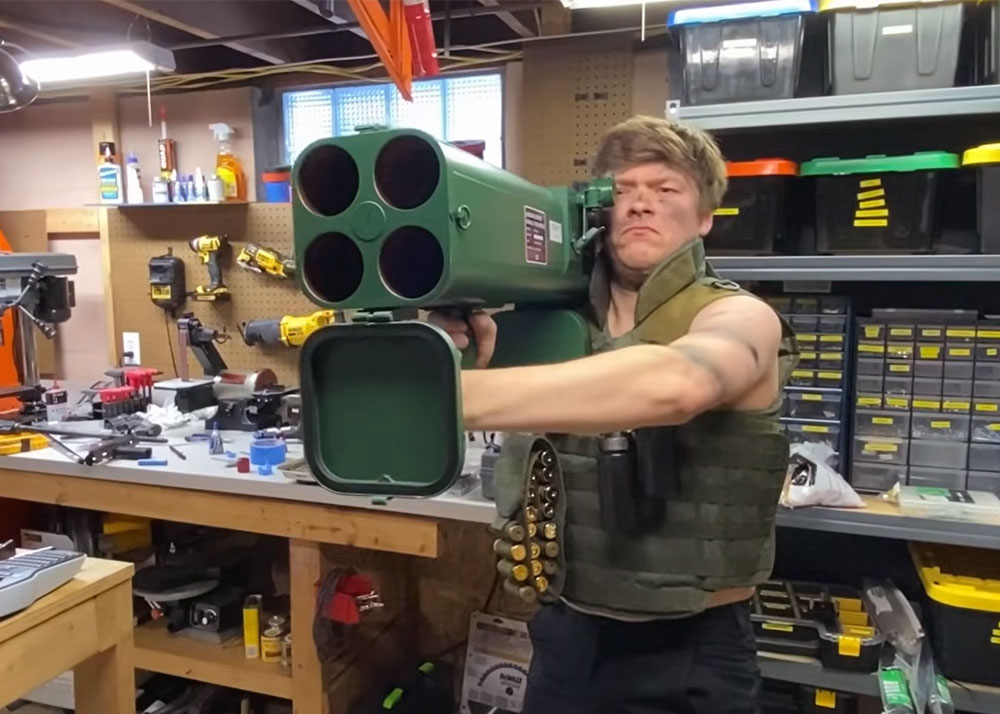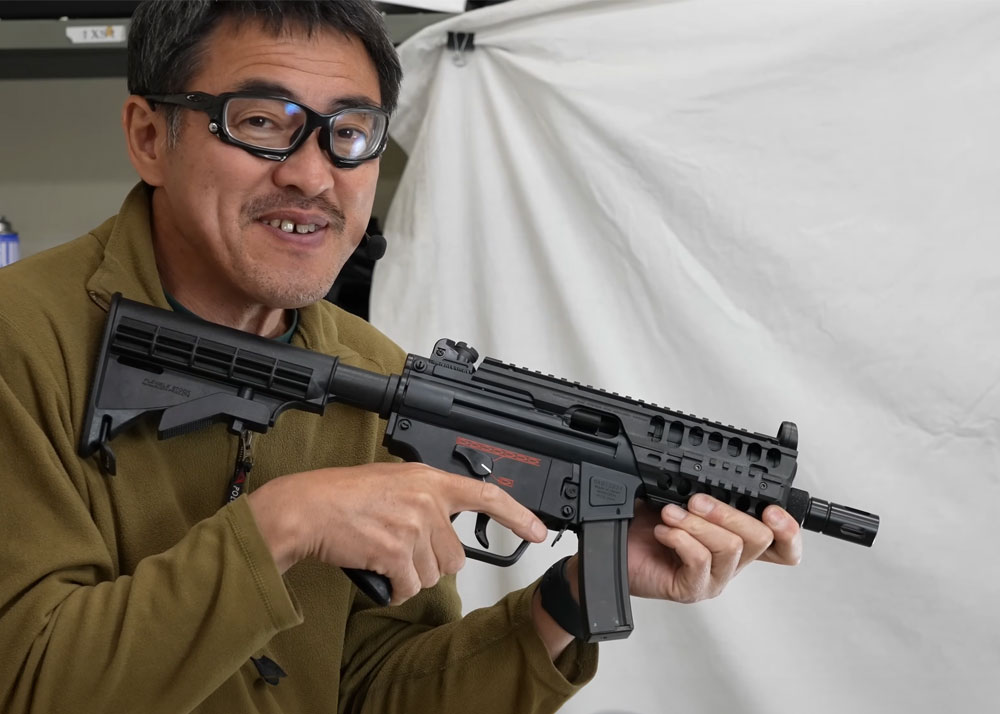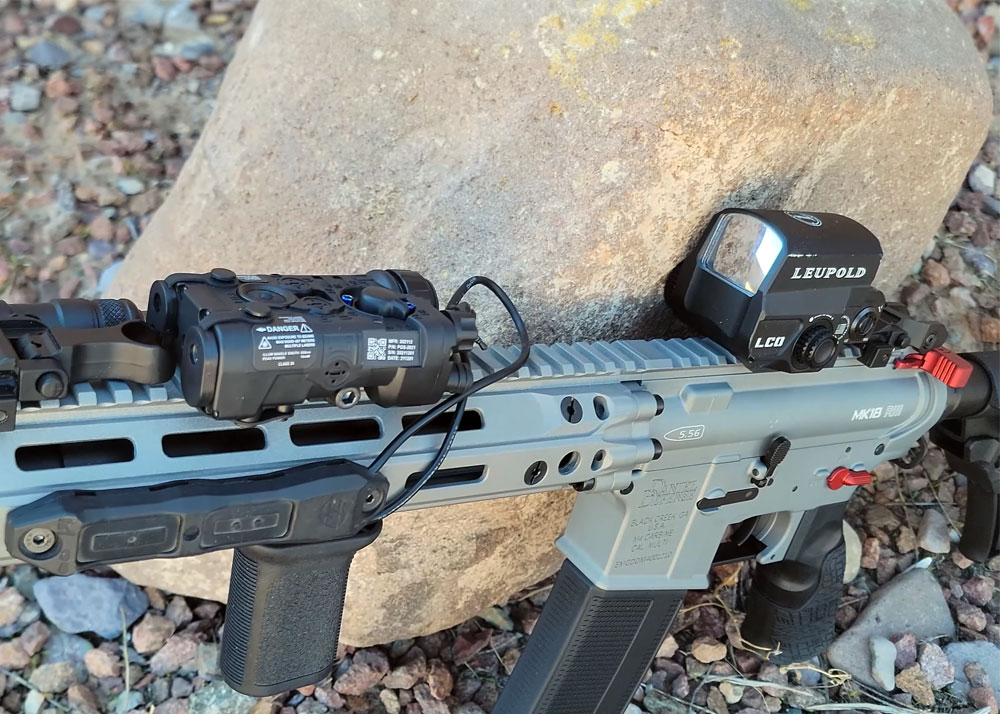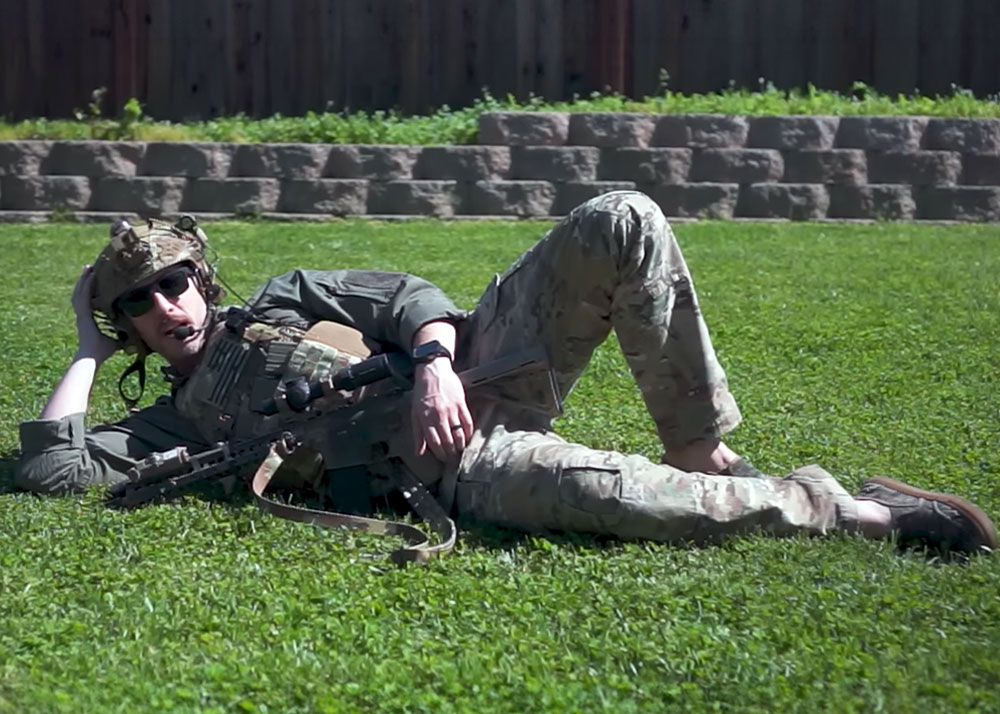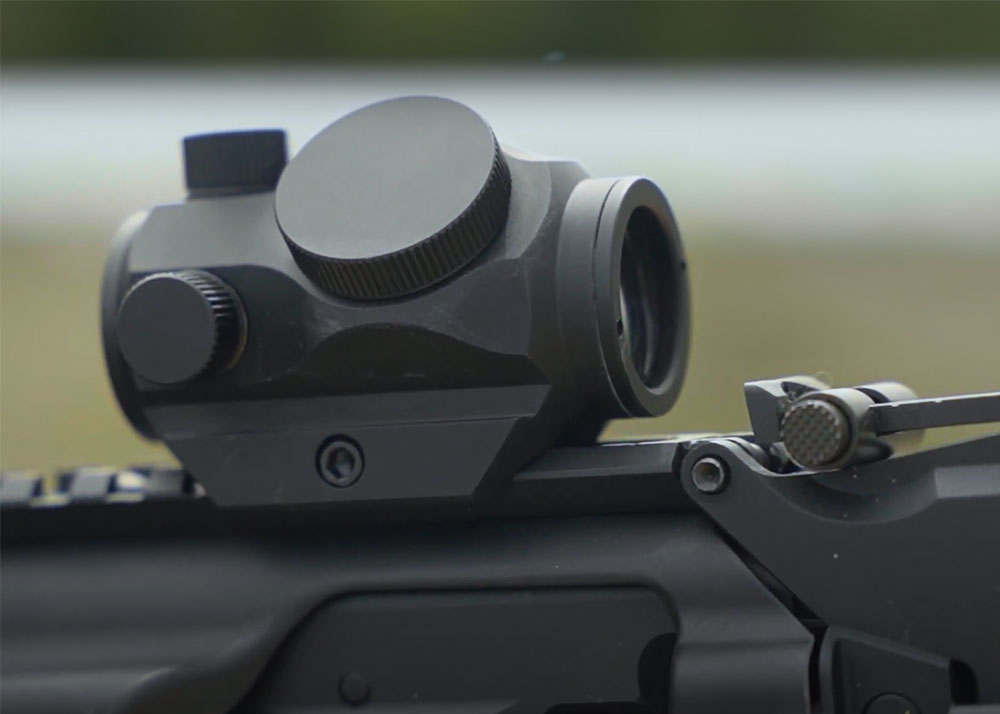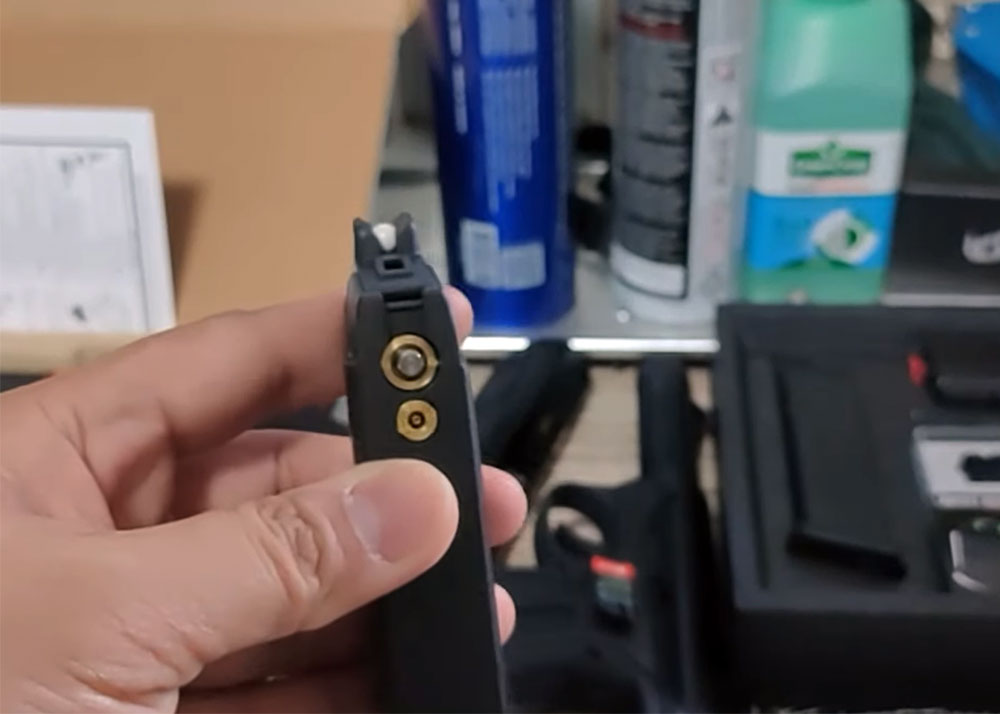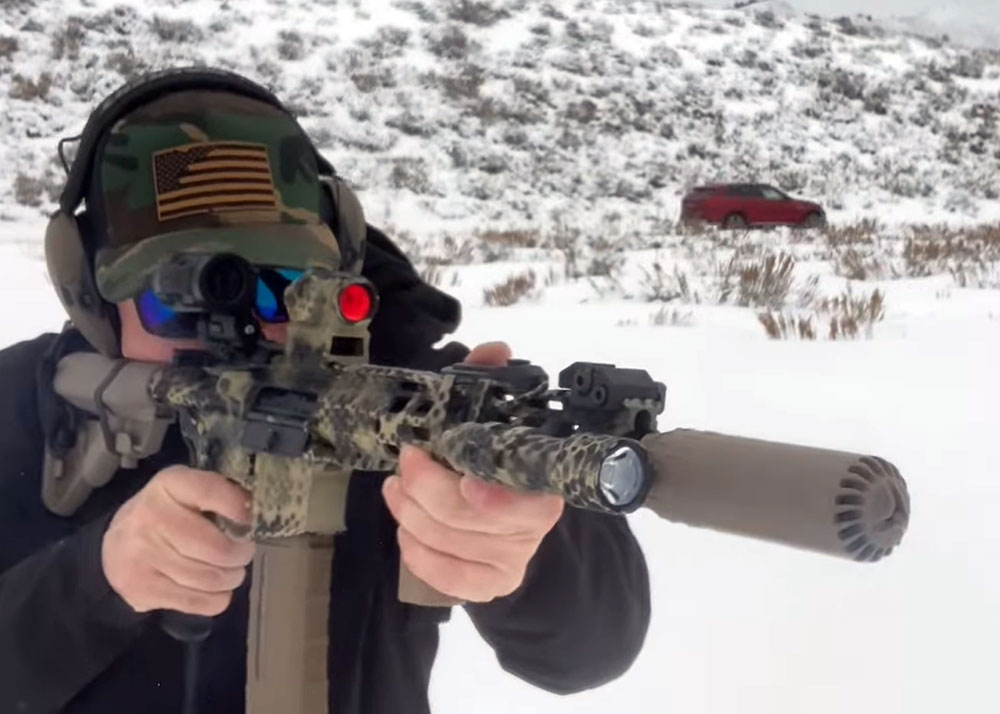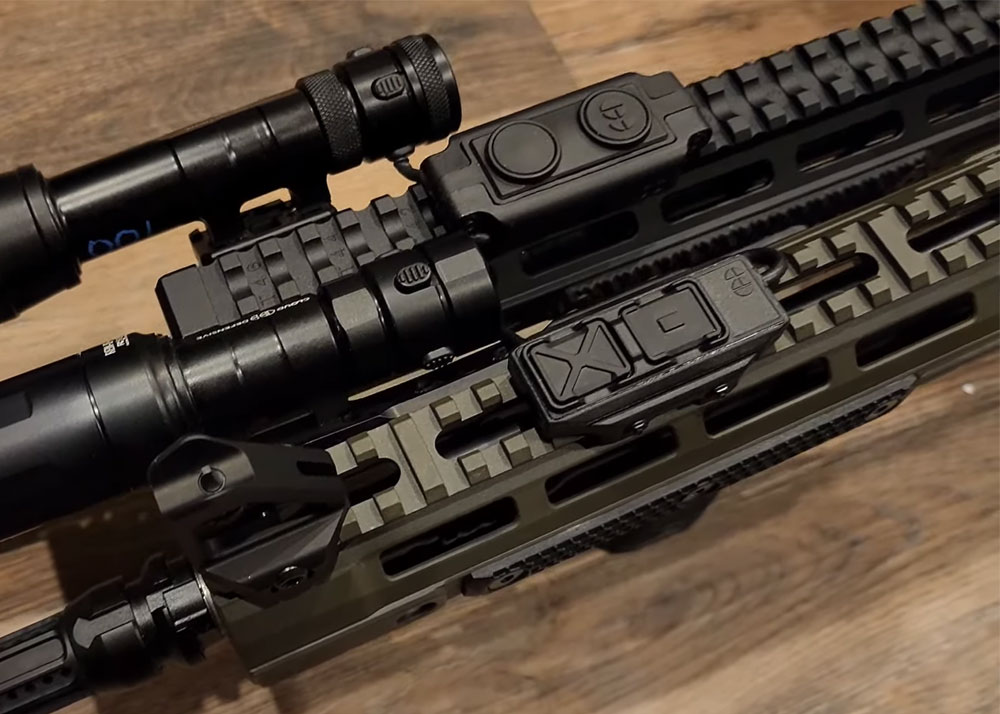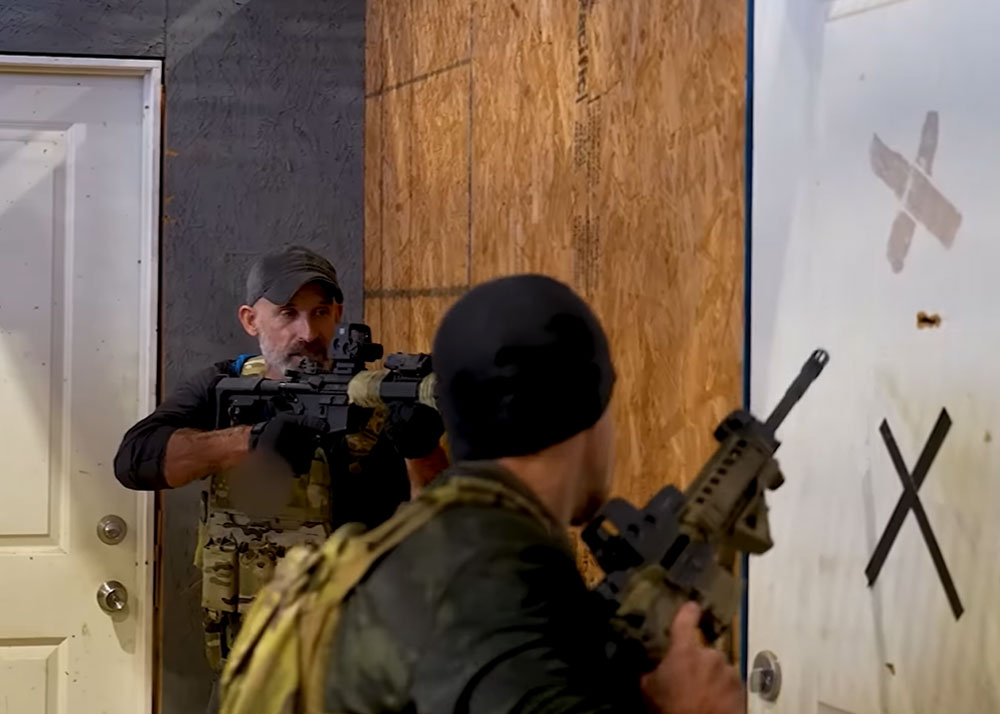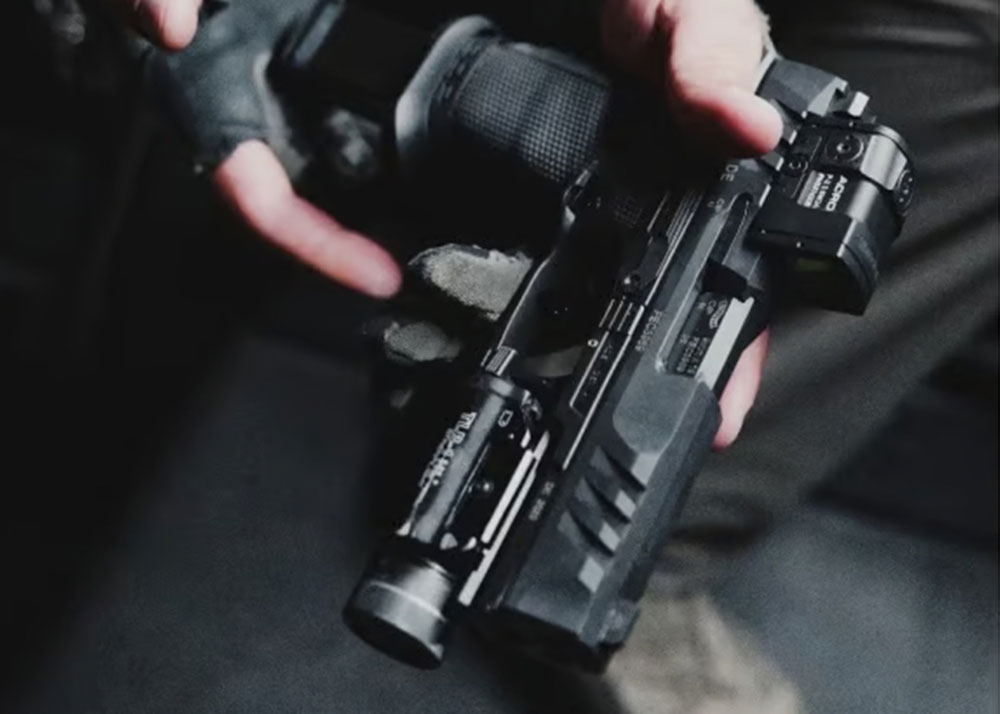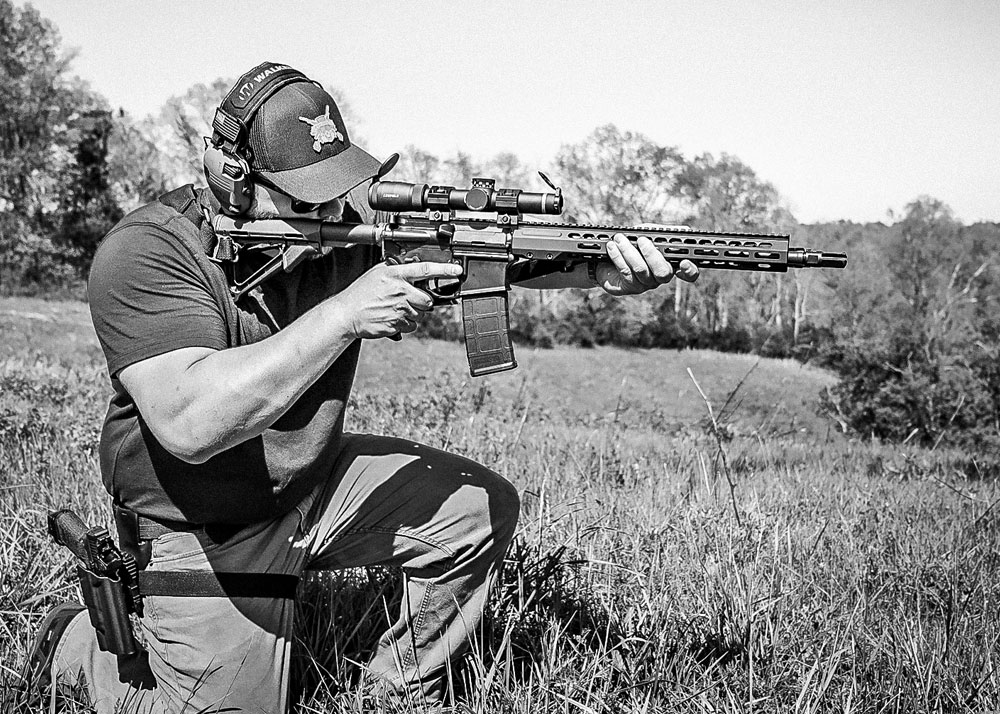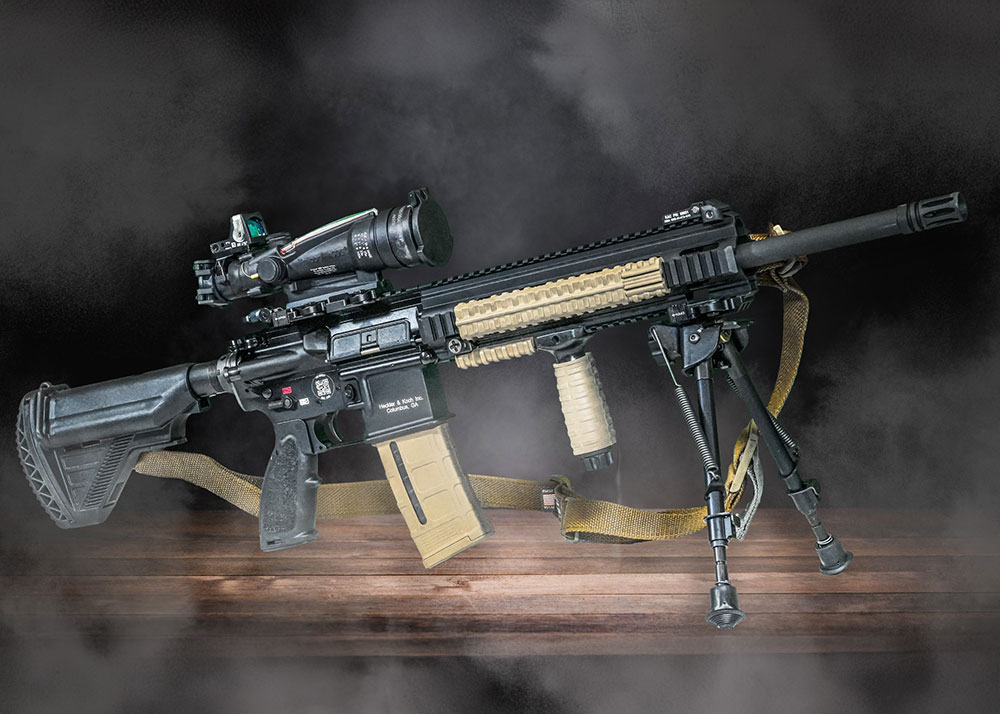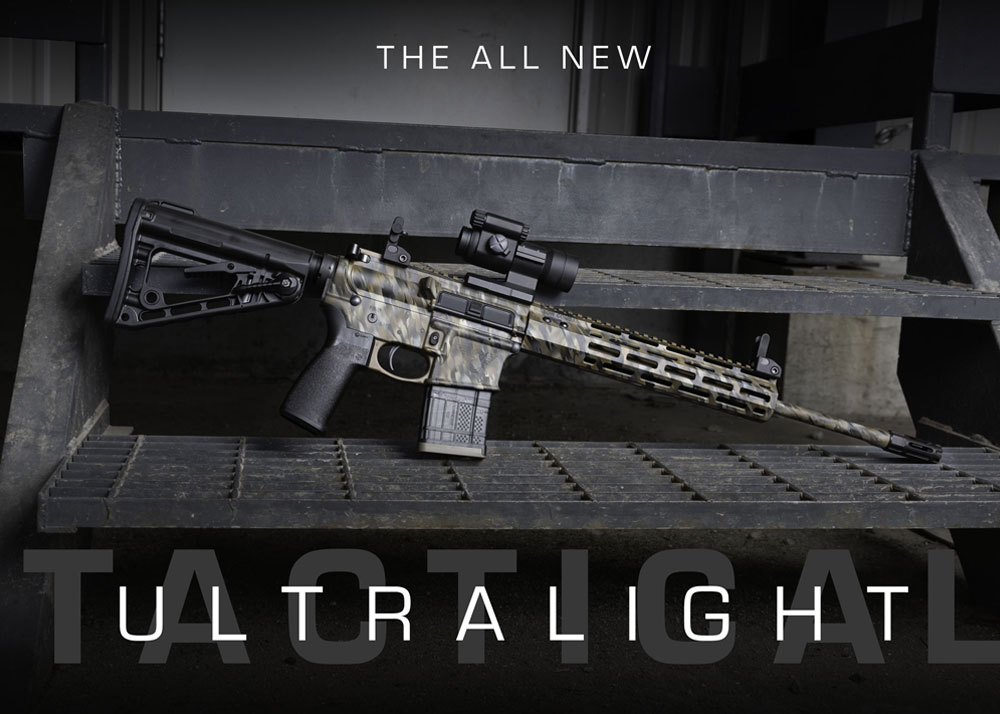(RS Wiki) The Most Influential Rifle In History: The AK-47
Gungho Cowboy
13 Feb 2008
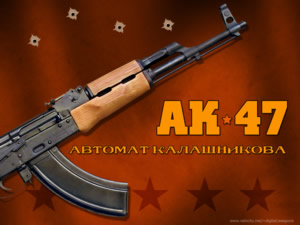
No other rifle in the world has influenced world history like the AK-47. This venerable rifle, whether you think it is a weapon of evil or weapon of good, is an iconic part of the history, much more than the M16 or even the M1 Garand. Ever since it was produced, this rifle and its variants has been in the hands of liberation fighters, criminals, terrorists, national armies, private security forces, smugglers, gun enthusiasts, and your friendly neighborhood criminal. The list perhaps maybe longer than that.
It is considered to be the No. 1 rifle in the world in terms reliability, simplicity and production numbers. Thus, the AK-47 is a respected weapon, very, very respected.
And again, leeching from Wikipedia, we expound more on this rifle:
The AK-47 (short for Russian: Автомат Калашникова образца 1947 года; Kalashnikov model automatic rifle of 1947) is a gas operated assault rifle which was used in most Eastern bloc countries during the Cold War.
Adopted and standardized in 1947, it was designed by Mikhail Kalashnikov and originally produced by Soviet manufacturer Izhevsk Mechanical Works. Compared with most auto-loading rifles of World War II, the AK-47 is compact, of comparable range, moderate power, and capable of selective fire. It was one of the first true assault rifles and, due to its durability and ease of use, remains the most widely used assault rifle. More AK-type rifles have been produced than any other assault rifle type.

History
Design background
During World War II, the Germans developed the assault rifle concept, based upon research that showed that most firefights happen at close range, within 300 meters. The power and range of contemporary rifle cartridges was excessive for most small arms firefights. As a result, armies sought a cartridge and rifle combining submachine gun features (large-capacity magazine, selective-fire) with an intermediate-power cartridge effective to 300 meters. To reduce manufacturing costs, the 7.92x57mm Mauser cartridge case was shortened, the result of which was the lighter 7.92x33mm Kurz (German: Short).
The resultant rifle, the Sturmgewehr 44 (StG44) was not the first with these features; its predecessors were the Italian Cei-Rigotti and the Russian Fedorov Avtomat design rifles. The Germans, however, were the first to produce and field sufficient numbers of this assault rifle to properly evaluate its combat utility. Towards the end of the war, they fielded the weapon against the Soviets; the experience deeply influenced Soviet military doctrine in the post-war years.
According to Mikhail Kalashnikov, he began imagining his assault rifle while in hospital after being wounded in the Battle of Bryansk. A frequent topic of conversation among the patients was the lack of an automatic rifle to match those of the Germans. After tinkering with designs, he entered a competition that had been launched for a new weapon that would take the 7.62x41mm cartridge developed by Elisarov and Semin in 1943 (the 7.62x41mm cartridge predated the current 7.62x39mm). A particular requirement of the competition was the reliability of the firearm in the muddy, wet, and frozen conditions of the Soviet frontline. Influenced by the simplicity of the design of Aleksei Sudaev's PPS-43 submachine gun, Kalashnikov produced his "Mikhtim" (derived from his first name and patronymic) and won the competition after it was dragged through mud, sand, and dust and was still able to fire without jamming. The "Mikhtim" was the prototype for the development of a family of firearms which culminated in the AK-47 in 1947.
Design concept
Mikhail Kalashnikov denies his assault rifle was based on the German StG44 assault rifle despite circumstantial evidence to the contrary. The AK-47 is best described as a hybrid of previous rifle technology innovations: the double locking lugs and unlocking raceway of the M1 Garand/M1 carbine, the trigger and safety mechanism of the John Browning designed Remington Model 8 rifle, and the gas system and layout of the StG44. The main advantages of the Kalashnikov rifle are simple design and adaptation to mass production; it is a fusion of the best the Garand, Browning, and StG44 had to offer. Kalashnikov's team had access to all of these weapons and had no need to reinvent the wheel.
Receiver development history
There were many difficulties during the initial phase of production. The first production models had stamped sheet metal receivers. Difficulties were encountered in welding the guide and ejector rails, causing high rejection rates. Instead of halting production, a heavy machined receiver was substituted for the sheet metal receiver. This was a more costly process, but the use of machined receivers accelerated production as tooling and labor for the earlier Mosin-Nagant rifle's machined receiver were easily adapted. Partly because of these problems, the Soviets were not able to distribute large numbers of the new rifle to soldiers until 1956. During this time, production of the interim SKS rifle continued.
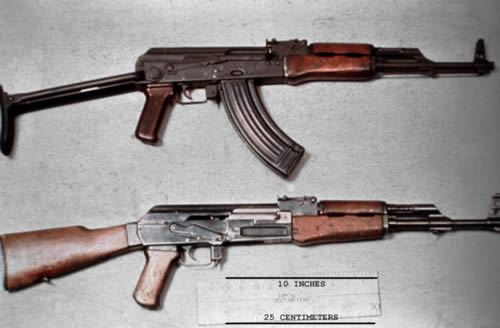
Once manufacturing difficulties had been overcome, a redesigned version designated the AKM (M for "modernized" or "upgraded" — in Russian: Автомат Калашникова Модернизированный Avtomat Kalashnikova Modernizirovanniy) was introduced in 1959. This new model used a stamped sheet metal receiver and featured a slanted muzzle brake on the end of the barrel to compensate for muzzle rise under recoil. In addition, a hammer retarder was added to prevent the weapon from firing out of battery (without the bolt being fully closed), during rapid or automatic fire. This is also sometimes referred to as a "cyclic rate reducer", or simply "rate reducer", as it also has the effect of reducing the number of rounds fired per minute during automatic fire. It was also lighter than the previous model, at roughly one-third lighter. Both licensed and unlicensed production of the Kalashnikov weapons abroad were almost exclusively of the AKM variant, partially due to the much easier production of the stamped receiver. This model is the most commonly encountered, having been produced in much greater quantities. All rifles based on the Kalashnikov design are frequently referred to as AK-47s in the West, although this is only correct when applied to rifles based on the original 3 receiver types. In most former Eastern Bloc countries, the weapon is known simply as the "Kalashnikov". The photo above at right illustrates the differences between the Type 2 milled receiver and the Type 4 stamped, including the use of rivets rather than welds on the stamped receiver, as well as the placement of a small dimple above the magazine well for stabilization of the magazine.
In 1978, the Soviet Union began replacing their AK-47 and AKM rifles with a newer design, the AK-74. This new rifle and cartridge had only started being exported to eastern European nations when the Soviet Union collapsed, drastically slowing production of this and other weapons of the former Soviet bloc.
Features
The AK is simple, inexpensive to manufacture and easy to clean and maintain. Its ruggedness and reliability are legendary. The large gas piston, generous clearances between moving parts, and tapered cartridge case design allow the gun to endure large amounts of foreign matter and fouling without failing to cycle. This reliability comes at the cost of accuracy, as the looser tolerances do not allow the precision and consistency that are required of more accurate firearms. Reflecting Soviet infantry doctrine of its time, the rifle is meant to be part of massed infantry fire, not long range engagements.
The notched rear tangent iron sight is adjustable, and is calibrated in hundreds of meters. The front sight is a post adjustable for elevation in the field. Windage adjustment is done by the armory before issue. The battle setting places the round within a few centimeters above or below the point of aim out to about 250 meters (275 yd). This "point-blank range" setting allows the shooter to fire the gun at any close target without adjusting the sights. Longer settings are intended for area suppression. These settings mirror the Mosin-Nagant and SKS rifles which the AK-47 replaced. This eased transition and simplified training.
The prototype of the AK-47, the AK-46, had a separate fire selector and safety. These were later combined in the production version to simplify the design. The fire selector acts as a dust cover for the ejection port when placed on safe. This makes it easier to carry the AK-47 through difficult terrain because the operator only has to safe the firearm, and does not have to remember to close another latch to protect the operating mechanism.
The bore and chamber, as well as the gas piston and the interior of the gas cylinder, are generally chromium-plated. This plating dramatically increases the life of these parts by resisting corrosion and wear. This is particularly important, as most military-production ammunition during the 20th century contained corrosive mercuric salts in the primers, which mandated frequent and thorough cleaning in order to prevent damage. Chrome plating of critical parts is now common on many modern military weapons.
Operating cycle
To fire, the operator inserts a loaded magazine, moves the selector lever to the lowest position, pulls back and releases the charging handle, aims, and then pulls the trigger. In this setting, the firearm fires only once (semi-automatic), requiring the trigger to be released and depressed again for the next shot. With the selector in the middle position (full-automatic), the rifle continues to fire, automatically cycling fresh rounds into the chamber, until the magazine is exhausted or pressure is released from the trigger. As each bullet travels through the barrel, a portion of the gases expanding behind it is diverted into the gas tube above the barrel, where it impacts the gas piston. The piston, in turn, is driven backward, pushing the bolt carrier, which causes the bolt to move backwards, ejecting the spent round, and chambering a new round when the recoil spring pushes it back.
Disassembly
Dismantling the rifle involves the operator depressing the magazine catch and removing the magazine. The charging handle is pulled to the rear and the operator inspects the chamber to verify the weapon is unloaded. The operator presses forward on the retainer button at the rear of the receiver cover while simultaneously lifting up on the rear of the cover to remove it. The operator then pushes the spring assembly forward and lifts it from its raceway, withdrawing it out of the bolt carrier and to the rear. The operator must then pull the carrier assembly all the way to the rear, lift it, and then pull it away. The operator removes the bolt by pushing it to the rear of the bolt carrier; rotating the bolt so the camming lug clears the raceway on the underside of the bolt carrier and then pulls it forward and free. When cleaning, the operator will pay special attention to the barrel, bolt face, and gas piston, then oil lightly and reassemble.
Ballistics
The standard AK-47 or AKM fires a 7.62x39mm round with a muzzle velocity of 710 metres per second (2,329 ft/s). Muzzle energy is 2,010 joules (1,467 ft·lbf). Cartridge case length is 38.6 millimetres (1.5 in), weight is 18.21 grams (281.0 gr). Projectile weight is normally 8 grams (123 gr). The AK-47 and AKM, with the 7.62x39mm cartridge, have a maximum effective range of around 300–400 meters.

Variants
Kalashnikov variants include:
- AK-47 1948–51, 7.62x39mm — The very earliest models, with the Type 1 stamped sheet metal receiver, are now very rare.
- AK-47 1952, 7.62x39mm — Has a milled receiver and wooden buttstock and handguard. Barrel and chamber are chrome plated to resist corrosion. Rifle weight is 4.2 kg (9.3 lb).
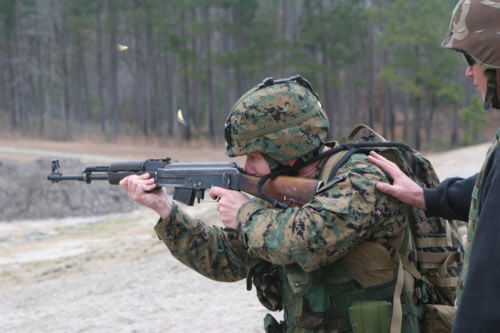
- AKS-47 — Featured a downward-folding metal stock similar to that of the German MP40, for use in the restricted space in the BMP infantry combat vehicle.
- RPK, 7.62x39mm — Squad automatic rifle version with longer barrel and bipod.
- AKM, 7.62x39mm — A simplified, lighter version of the AK-47; Type 4 receiver is made from stamped and riveted sheet metal (see schematic above). A slanted muzzle device was added to counter climb in automatic fire. Rifle weight is 3.61 kg (8 lb) due to the lighter receiver.
- AKMS, 7.62x39mm — Folding-stock version of the AKM intended for airborne troops. Stock may be either side- or under-folding
- AK-74 series, 5.45x39mm – See main article for details.
- AK-101 series
- AK-103/AK-104 series
- AK-107/AK-108 series
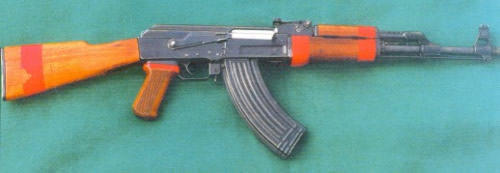
Derivatives
The basic design of the AK-47 has been used as the basis for other successful rifle designs such as the Finnish Valmet 62/76 and Sako Rk 95 TP, the Israeli Galil, the Indian INSAS and the Yugoslav Zastava M76 and M77/82 (not to be confused with the Barrett M82) rifles. Several bullpup designs have surfaced such as the Chinese Norinco Type 86S, although none have been produced in quantity. Bullpup conversions are also available commercially. For a complete list, see the List of weapons influenced by the Kalashnikov design.
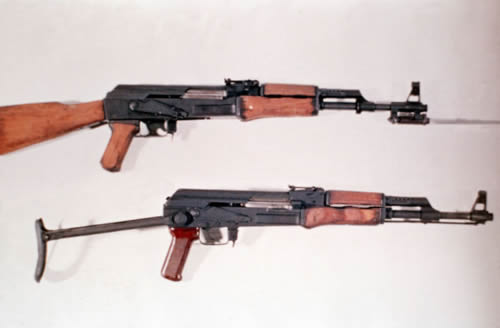
Licensing
Russia has repeatedly claimed that the majority of manufacturers produce AK-47 without a proper license from IZH. The Izhevsk Machine Tool Factory acquired a patent in 1999, making manufacture of the Kalashnikov rifle system by anyone other than themselves illegal. However, nearly one million AK-47 assault rifles are manufactured illegally each year.
Illicit trade
Throughout the world, the AK and variants are among the commonly smuggled small arms sold to governments, rebels, criminals, and civilians alike, with little international oversight. This trade ensures a ready supply of inexpensive weapons to a number of conflicts, including the Balkans, Iraq, Afghanistan, and Somalia. In some countries that are recovering from war or that are at war, prices for AKs are very low. In Somalia, Rwanda, Mozambique, Congo and Ethiopia, among others, prices are between $30–$125. After the Soviet retreat from Afghanistan, the Soviet Army left huge quantities of weapons including AKs which were used in its civil war between Taliban and Northern Alliance and were also exported to Pakistan. It is now also made in Pakistan's semi-autonomous areas. It is widely used by tribes in Africa like the Hamar, amongst others.
Cultural Influence
During the Cold War, the Soviet Union, Communist China and the United States supplied arms and technical knowledge to numerous client-state countries and rebel forces. This period saw the export, sometimes free of charge, of AK-47s by the Soviet Union and Communist China to pro-communist countries and groups such as the Nicaraguan Sandinistas and Vietcong. The AK design was spread to over 55 national armies.
The proliferation of this weapon is reflected by more than just numbers. The AK is included in the flag of Mozambique and its coat of arms. It is also found in the coat of arms of Zimbabwe and East Timor, the revolution era coat of arms of Burkina Faso, the flag of Hezbollah, and the logo of the Iranian Islamic Revolutionary Guards Corps. "Kalash", a shortened form of "Kalashnikov", is used as a name for boys in some African countries.

In the United States, movie makers often arm criminals, gang members and terrorist characters with AKs. In 2006, Colombian musician and peace activist César López devised the escopetarra, an AK converted into a guitar. One sold for US$17,000 in a fundraiser held to benefit the victims of anti-personnel mines, while another was exhibited at the United Nations' Conference on Disarmament.
Kalashnikov Museum
(also called the AK-47 Museum) opened November 4, 2004 in Izhevsk, a city in the Ural Mountains of Russia. The museum has focused backward in time. It chronicles the official biography of General Kalashnikov, from his childhood to proletarian hero. The Museum Complex of Small Arms of M. T. Kalashnikov, a series of halls and multimedia exhibitions devoted to the AK-47 assault rifle and its offspring. The museum complex has been drawing on average 10,000 visitors a month. The museum serves as Russia's monument to an infantry weapon and to the workers who have made it for almost 60 years.
“It presents the guns and their history with civic pride and a revived sense of national confidence. Think of Izhesvk as the Detroit of Slavic small arms. The exhibitions, ranging from static displays of weapons to plasma-screen video presentations showing the guns' use in recent decades, reflect a laborer's affection for what has long flowed from nearby foundries and assembly lines. Much of the material is also viewed through the life of Gen. Mikhail T. Kalashnikov, the man credited with designing the weapon in secret trials in 1947, and who still lives a few blocks away. Were you to substitute automobiles for firearms and add a bit of military décor, this might be a museum celebrating Henry Ford.”
“We emphasize the peaceful side of this story,” said Nadezhda Vechtomova, the museum director. “We are trying to separate the weapon as a weapon of murder from the people who are producing it and to tell its history in our country.”

